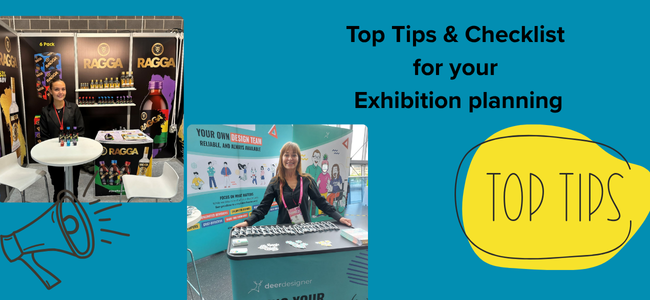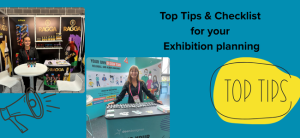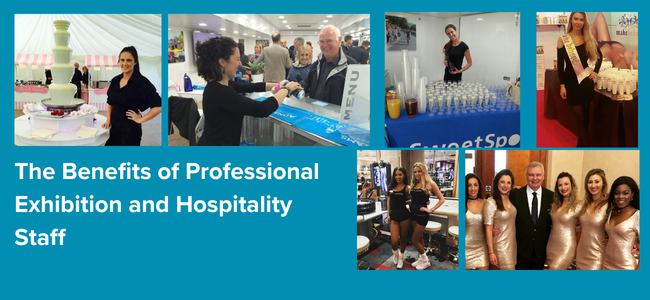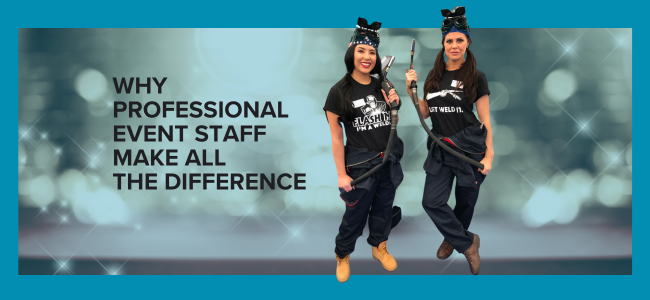How to Choose the Right Exhibition Staff for Your Brand When you exhibit at a…

A Practical Guide with Tips and Checklist for your Exhibition planning
Planning Your Next Exhibition Stand: A Practical Guide with Tips and Checklist
Exhibitions offer a unique opportunity to put your brand directly in front of potential clients, partners, and industry influencers. But with so many businesses competing for attention, your exhibition stand needs to be more than just present—it needs to be purposeful, professional, and planned to perfection.
Whether you’re exhibiting at a large-scale trade show or a more intimate industry event, preparation is key. From layout and logistics to promotional staff and post-show follow-up, there are many moving parts to consider. In this guide, we’ll take you through the essential elements of planning a successful exhibition stand, along with practical tips and a useful checklist to ensure nothing is overlooked.
1. Set Clear Objectives
Before you think about stand design or giveaways, ask yourself: what do you want to achieve?
Some common exhibition goals include:
Generating new leads
Launching a new product or service
Increasing brand awareness
Meeting existing clients
Networking with industry professionals
Defining your primary goal helps shape every other decision. It will influence how you design your space, who you send to represent your brand, and how you measure success.
2. Know Your Audience
Understanding the event’s audience is critical. Are attendees B2B decision-makers, end consumers, or industry media? Your messaging, visuals, and even tone of voice should be tailored to resonate with the people most likely to visit your stand.
3. Choose the Right Stand Space
Book your stand early to secure the best location. Stands near entrances, corners, food areas, or central aisles typically enjoy the highest footfall—but they’re also the most competitive.
Also consider:
Access to power and internet
Proximity to competitors
Ceiling height restrictions
Storage options
A well-placed stand can give you an edge before the event even begins.
4. Design with Purpose
Your stand should reflect your brand and engage passers-by within seconds. But good design isn’t just about looking sharp—it’s about functionality.
Tips for effective stand design:
Keep it open: Avoid physical barriers that block entry or visibility.
Brand consistently: Use your logo, colours, and fonts across all graphics.
Incorporate interactivity: Demos, touchscreens, and product samples invite people to engage.
Plan for storage: Keep clutter out of sight with built-in cupboards or hidden shelving.
A stand that invites, informs, and accommodates is far more effective than one that simply looks flashy.
5. Prepare Promotional Materials
Ensure your messaging is clear and concise across all printed and digital assets. Include:
Branded brochures or leaflets
Business cards or scannable QR codes
Product samples or merchandise
Branded bags (to help attendees carry your materials—and advertise you around the venue)
Digital options, such as tablets displaying your portfolio or interactive presentations, can reduce paper waste and make your offering feel more modern.
6. Consider Your Staffing Strategy
Your team on the day is just as important as your stand design. Enthusiastic, knowledgeable, and professional staff can make all the difference in how your brand is perceived.
If you’re stretched for internal resources—or want your team to focus on meetings or presentations—consider hiring external help. A professional exhibition staffing agency can provide trained promotional staff who are experienced in engaging visitors, collecting leads, distributing materials, and representing your brand positively.
Agencies like NEC Exhibition Staff Agency, for example, can supply event staff across the UK who understand how to draw in a crowd, keep energy levels high, and make a strong first impression. This not only improves stand performance but reduces the pressure on your internal team.
7. Promote in Advance
Build buzz before the event by letting people know you’ll be there. Use your website, email newsletters, and social media to promote your attendance. You can even tease a product launch, offer free samples to visitors, or invite followers to book meeting slots with your team.
Don’t forget to tag the event organiser’s accounts and use any official hashtags—they’ll often reshare your posts, giving you additional exposure.
8. Plan for Lead Capture
The primary goal of many exhibition stands is to generate leads—but you’ll need a reliable system for collecting contact details.
Options include:
Badge scanners (often provided by organisers)
Business card drops
Digital forms on tablets
QR codes linking to signup pages
Make sure Promotional Staff are briefed on data collection protocols and, if applicable, GDPR compliance.
9. Don’t Forget the Logistics
Behind every seamless exhibition stand is a lot of unglamorous admin. Consider:
Stand delivery and setup times
Health and safety forms
Risk assessments
Internet access
Catering (especially for staff over long days)
Hotel accommodation and transport if travelling
Creating a timeline well in advance can help prevent last-minute issues. It’s also wise to have a contingency plan in place—for example, spare cables, chargers, or printed materials in case of mishaps.
10. Follow Up Promptly
The event isn’t over when the doors close. Arguably, the real work starts afterwards.
Sort through leads while the conversations are still fresh. Follow up with a thank-you email, a personalised offer, or a piece of useful content. The quicker you re-engage, the more likely you are to convert interest into action.
Also take time to evaluate your performance. Did you meet your objectives? What worked well? What would you do differently next time?
Exhibition Planning Checklist
Here’s a quick checklist to keep you on track:
✅ Define your exhibition goals
✅ Research your audience and tailor messaging
✅ Book stand space early
✅ Design a functional and eye-catching stand
✅ Prepare promotional materials and giveaways
✅ Secure trained and enthusiastic staff
✅ Promote your attendance in advance
✅ Set up a system for capturing leads
✅ Organise logistics, travel, and accommodation
✅ Have a contingency plan
✅ Follow up promptly post-event
✅ Review performance and take notes for next time
Investing in your stand brings success
Planning a successful exhibition stand takes time, attention to detail, and a clear understanding of your objectives. While creativity plays a big role in catching eyes, it’s solid organisation and great people that keep visitors engaged and ensure lasting results.
Whether you’re attending a major trade show or a niche industry event, every touchpoint—from stand layout to staffing—reflects your brand. Investing in the right support, such as using a professional exhibition staffing agency, can help reduce stress, fill resource gaps, and ensure your stand delivers the impact you’re aiming for.
Because when it comes to exhibitions, it’s not just about showing up—it’s about standing out.



